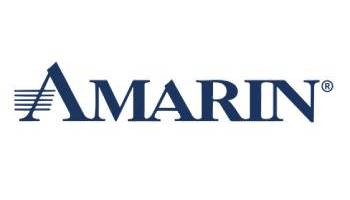Market Definition
Brachytherapy is a procedure that involves placing a radioactive source inside the body. Brachytherapy is a form of radiation therapy that's used to treat cancer. Brachytherapy is also called as internal radiation.
Global brachytherapy market is estimated to reach $XX million by 2026; growing at a CAGR of 4.7% till 2026.
Market Dynamics
Rising prevalence of cancer has derived the demand of the market. For instance, according to the American Institute for Cancer Research, globally, around 2 million new cases of breast cancer are diagnosed in 2018. Around 627,000 women died from breast cancer, which is approximately 15% of all cancer deaths among women in 2018. Cervical is the fourth most commonly occurred cancer in women. According to the International Agency for Research on Cancer (IARC), globally, around 570 000 cervical cancer cases are diagnosed and 311 000 deaths from cervical cancer occurred in 2018. China and India together contributed more than one-third of the global cervical cancer cases, with 106 000 cases in China and 97 000 cases in India in 2018. According to the American Cancer Society, it is estimated that in 2020 there will be 191,930 new cases of prostate cancer and 33,330 deaths from prostate cancer in the United States. Skin cancer are of two type melanoma and non-melanoma. According to the International Agency for Research on Cancer (IARC), nearly 300,000 new cases of melanoma skin cancer diagnosed, and one million new cases of non-melanoma skin cancer are diagnosed in 2018. According to the American Cancer Society, in the U.S., more than 9,500 cases of skin cancer are diagnosed every day. According to the World Health Organization (WHO), globally, lung cancer accounts for 2.09 million cases in 2018. According to the American Cancer Society, in 2020, an estimate of 228,820 cases of lung cancer is expected to get diagnosed in the United States. Brachytherapy is used for the treatment of prostate cancer; breast cancer; lung cancer; rectal cancer; eye cancer; and skin cancer; as well as gynecologic cancers such as cervical cancer and uterine cancer. Further, technological advancement in brachytherapy devices is a key driving factor of the market. However, the side effect of brachytherapy might hamper market growth. The side effects of brachytherapy can start immediately or later after treatment. The immediate side effect after brachytherapy treatment includes urinary symptoms such as stinging, burning, poor stream, urgency in passing urine; traces of blood in the urine; and soreness, bruising and swelling. The later side effect of brachytherapy treatment includes constipation which can last for four weeks or more; Erectile dysfunction; and Bowel symptoms. Brachytherapy treatment for prostate cancer can cause erectile dysfunction in approximately 15-30% of patients. Moreover, increasing funds for cancer treatment would provide lucrative opportunities for the market in coming years.
Market Segmentation
The global brachytherapy market is mainly classified based on type and application. Type is further segmented into High Dose Rate (HDR) Brachytherapy and Low Dose (LDR) Brachytherapy. By application, the market is divided into Prostate Cancer, Gynecological Cancer, Breast Cancer and Other Cancers.
High Dose Rate (HDR) Brachytherapy was dominating the global brachytherapy market in 2019, owing to the increasing commercialization of regulatory approved brachytherapy, rising investment for the development of brachytherapy for cancer treatment, and launch of new brachytherapy. For instance, Eckert & Ziegler BEBIG has introduced the first High Dose Rate (HDR) brachytherapy afterloader for Barbados, which represents an important step for treating cancer. SagiNova HDR afterloader introduced the first and to date only brachytherapy system to Barbados. Additionally, the company plan to introduce SagiNova for other brachytherapy treatments such as breast, prostate and esophagus.
Regional Analysis
Based on geography, the global brachytherapy market is divided into North America, Europe, Asia-Pacific, South America, and Middle East & Africa. North America is further divided in the U.S., Canada, and Mexico, whereas Europe consists of the UK, Germany, France, Italy, and Rest of Europe. Asia-Pacific is segmented into India, China, Japan, South Korea, and Rest of Asia-Pacific. The South America region includes Brazil, Argentina, and the Rest of South America, while the Middle East & Africa is categorized into GCC Countries, Egypt, South Africa, and Rest of Middle East & Africa.
North America was dominating the brachytherapy market in 2019, due to the partnership between companies to develop brachytherapy, commercialization of technologically advanced brachytherapy and rising investment of for the treatment of cancer from brachytherapy. For instance, the National Institutes of Health has funded the University of Virginia Cancer Center more than $1.8 million to improve radiation therapy and breast surgery for patients with early-stage breast cancer. University of Virginia Cancer Center Precision Breast intraoperative radiation therapy, or IORT. University of Virginia Cancer Center use of advanced, image-guided brachytherapy for breast IORT.
Competitive landscape
Key players operating in the brachytherapy industry include Eckert & Ziegler BEBIG, IsoRay Medical, Inc., Elekta AB (pub), C.R. Bard, Inc., Theragenics Corporation, CIVCO Medical Solutions, Huiheng Medical, Inc., Sun Nuclear Corporation, iCAD, Inc., and Varian Medical Systems, Inc.
The launch of new brachytherapy device, rising investment for the development of brachytherapy device, the collaboration between companies to develop and commercialize brachytherapy device, and increasing technological advancement in brachytherapy devices are some of the strategies adopted by the major companies. For instance, on April 28, 2019, Eckert Ziegler BEBIG (EZB) and Adaptiiv Medical Technologies Inc. (Adaptiiv) has signed an agreement to provide an integrated workflow for cancer centers and create 3D printed brachytherapy applicators for use in patient-specific treatment. With this strategic collaboration, Adaptiiv and EZB will demonstrate that 3D printing can provide clinically viable solutions that improve treatment and patient care. Adaptiiv is the first company in the to receive US FDA 510(k) clearance for software for 3D print patient-specific medical devices for use in radiation oncology.
Brachytherapy Market Key Segments:
By Type
- High Dose Rate (HDR) Brachytherapy
- Low Dose (LDR) Brachytherapy
By Application
- Prostate Cancer
- Gynecological Cancer
- Breast Cancer
- Other Cancers
Key Global Brachytherapy Industry Players
- Eckert & Ziegler BEBIG
- IsoRay Medical, Inc.
- Elekta AB (pub)
- Theragenics Corporation
- C.R. Bard, Inc.
- CIVCO Medical Solutions
- Huiheng Medical, Inc.
- Sun Nuclear Corporation
- iCAD, Inc.
- Varian Medical Systems, Inc.
What Report Provides
- Full in-depth analysis of the parent Industry
- Important changes in market and its dynamics
- Segmentation details of the market
- Former, on-going, and projected market analysis in terms of volume and value
- Assessment of niche industry developments
- Market share analysis
- Key strategies of major players
- Emerging segments and regional growth potential







.jpg)








 +91 73850 57479
+91 73850 57479





